 |
ISSUES IN UNEMPLOYMENT:Public Policy and Job Search |
| << OPEN ECONOMY (Continued…):A first model of the natural rate |
| ECONOMIC GROWTH:THE SOLOW MODEL, Saving and investment >> |
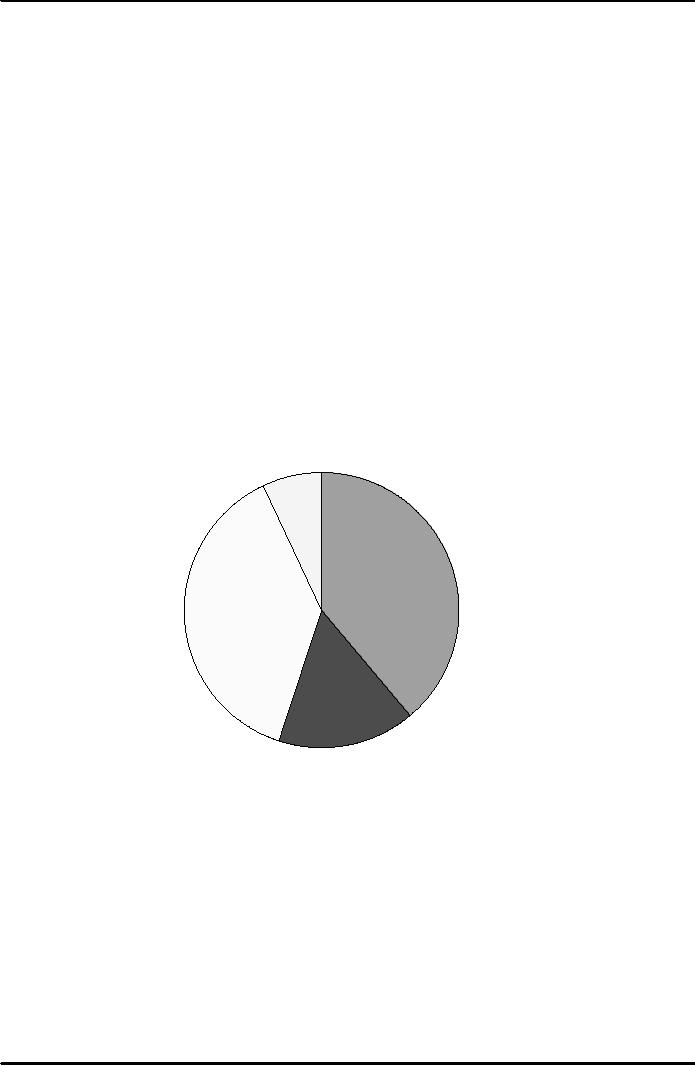
Macroeconomics
ECO 403
VU
LESSON
18
ISSUES IN
UNEMPLOYMENT
Sectoral
shifts
�
def:
changes in the composition of
demand among industries or
regions
�
Example#1
Technological change
increases
demand for computer repair
persons, decreases demand
for typewriter repair
persons
Example#2
A new international trade
agreements cause greater
demand for workers in
the
export
sectors and less demand
for workers in import-competing
sectors.
�
It
takes time for workers to
change sectors, so sectoral
shifts cause
frictional
unemployment.
Industry
shares in GDP,
1969-70
Industries
7%
Agriculture
39%
Services
38%
Manufacturing
16%
Industry
shares in GDP,
2003-04
65
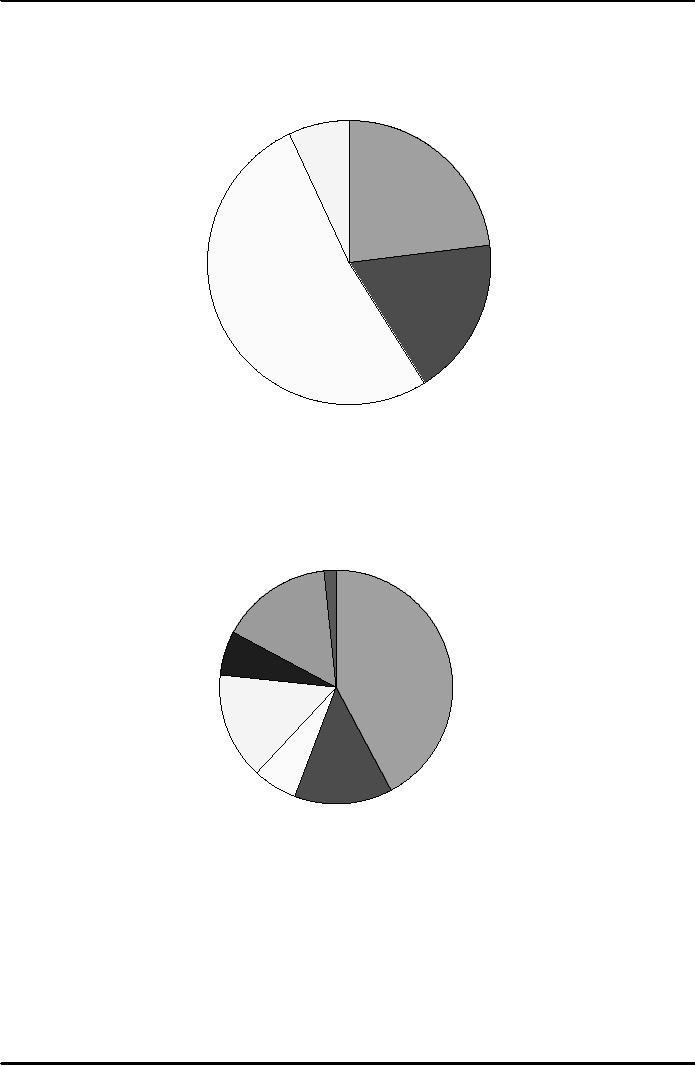
Macroeconomics
ECO 403
VU
Other
Industries
7%
Agriculture
23%
Manufacturing
Services
18%
52%
Labor
Force Break up in Pakistan
2004
Community
and
Social
Others
Services
2%
16%
Transport
Agriculture
6%
41%
W
holesale and
Retail
Trade
15%
Construction
manufacturing
6%
and
mining
14%
Sectoral
shifts abound
�
In our dynamic
economy, smaller (though
still significant) sectoral
shifts occur
frequently,
contributing
to frictional unemployment.
66
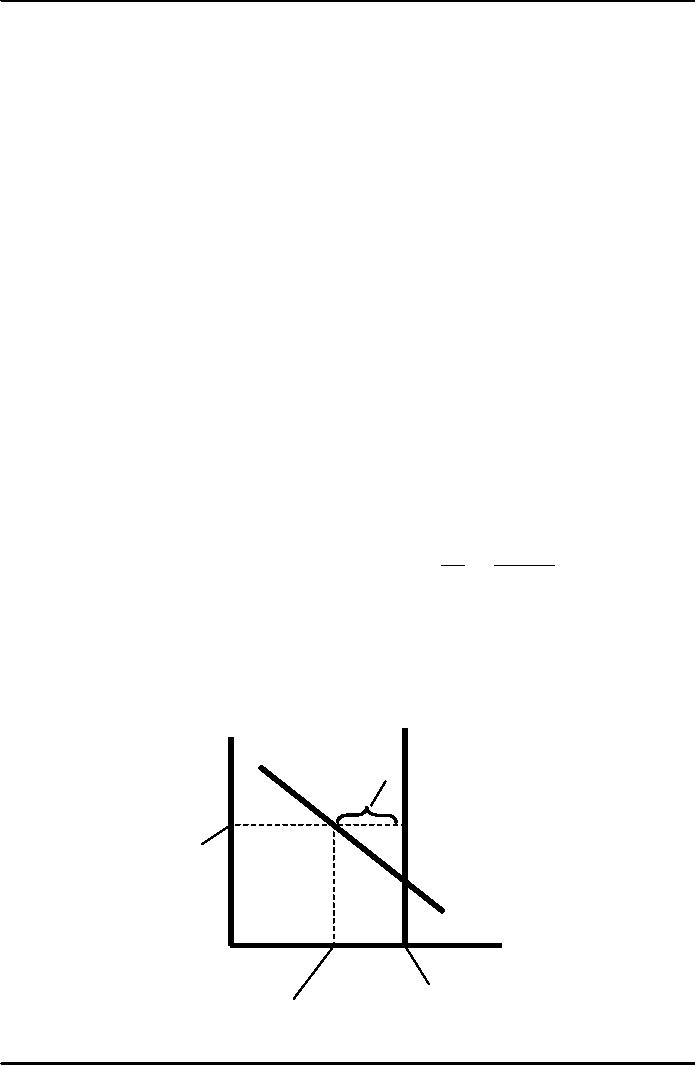
Macroeconomics
ECO 403
VU
Public
Policy and Job
Search
Govt
programs affecting
unemployment
�
Govt
employment agencies:
disseminate
info about job openings to
better match workers &
jobs
�
Public
job training
programs:
help
workers displaced from
declining industries get
skills needed for jobs in
growing
industries
Unemployment
insurance (UI)
�
UI
pays part of a worker's
former wages for a limited
time after losing his/her
job.
�
UI
increases search unemployment,
because it:
reduces the
opportunity cost of being
unemployed
reduces the
urgency of finding
work
hence, reduces
f
�
Studies:
The longer a worker is
eligible for UI,
the
longer the duration of the
average spell of
unemployment.
Benefits
of UI
�
By
allowing workers more time
to search, I may lead to
better matches
between
jobs
and workers, which would
lead to greater productivity
and higher incomes.
Why
is there unemployment?
U
s
=
T
h e n a tu r a l r a te o f u n e m p lo y m e n t:
L
s
+f
�
There
are two reasons why f <
1:
1.
Job search
2.
Wage rigidity
Unemployment
from real wage
rigidity
Supply
Real
wage
Unemployment
Rigid
real
wage
Demand
Labor
Amount
of
Amount
of labor
labor
hired
willing
to work
67
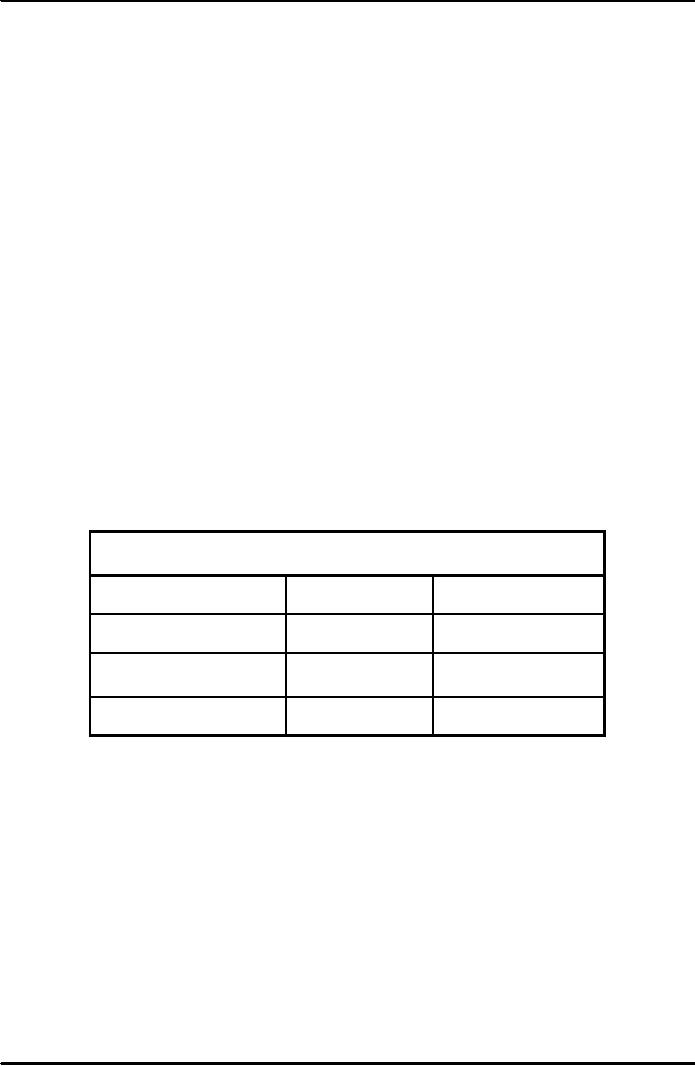
Macroeconomics
ECO 403
VU
If
the real wage is stuck
above the equilibrium level,
then there aren't enough
jobs to go
around.
Then, firms must ration
the scarce jobs among
workers.
Structural
unemployment: the
unemployment resulting from
real wage rigidity and
job
rationing.
Reasons
for wage rigidity
1.
Minimum
wage laws
2.
Labor
unions
3.
Efficiency
wages
The
minimum wage
�
The
minimum wage is well below
the equilibrium wage for
most workers, so it
cannot
explain
the majority of natural rate
unemployment.
�
However,
the minimum wage may
exceed the equilibrium wage
of unskilled workers,
especially
teenagers.
�
If
so, then we would expect
that increases in the
minimum wage would
increase
unemployment
among these groups.
The
minimum wage in the real
world:
�
In
Sept 1996, the minimum
wage was raised from
$4.25 to $4.75 in US.
Unemployment
rates, before &
after
3rd
Q 1996
1st
Q 1997
Teenagers
16.6%
17.0%
Single
mothers
8.5%
9.1%
All
workers
5.3%
5.3%
Other
studies: A 10% increase in
the minimum wage increases
teenage
�
unemployment
by 1-3%.
Labor
unions
�
Unions
exercise monopoly power to
secure higher wages for
their members.
�
When
the union wage exceeds
the equilibrium wage,
unemployment results.
�
Employed
union workers are insiders
whose interest is to keep
wages high.
�
Unemployed
non-union workers are
outsiders and would prefer
wages to be lower (so
that
labor
demand would be high enough
for them to get
jobs).
Efficiency
Wage Theory
�
Theories
in which high wages increase
worker productivity:
Attract
higher quality job
applicants
68
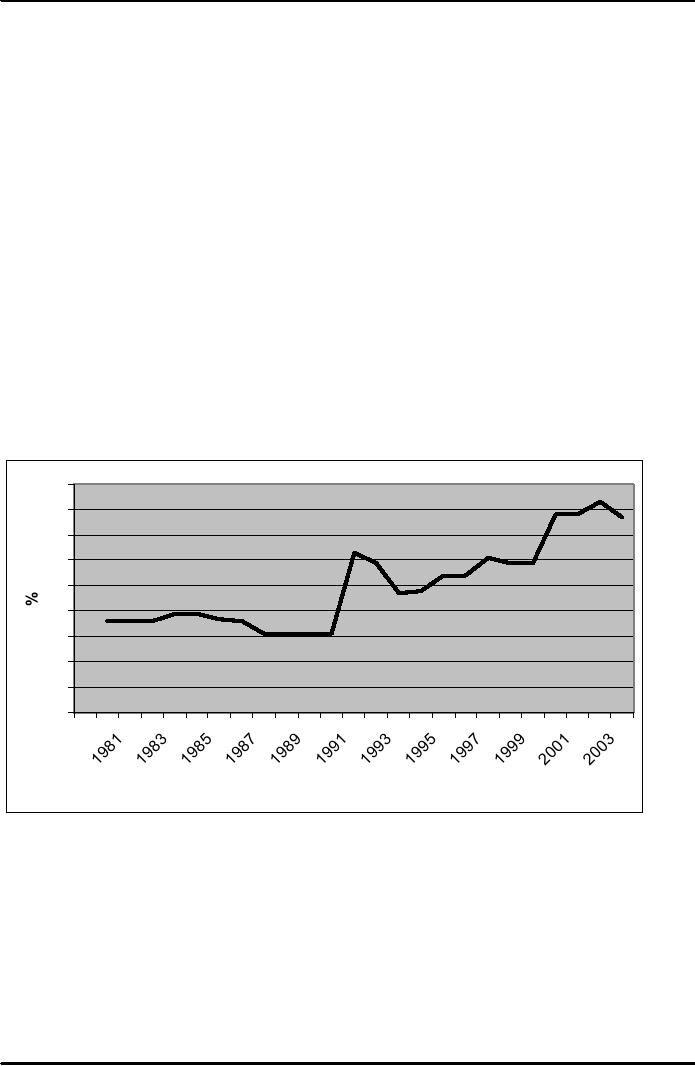
Macroeconomics
ECO 403
VU
Increase
worker effort and reduce
"shirking"
Reduce
turnover, which is
costly
Improve
health of workers (in
developing countries)
�
The
increased productivity justifies
the cost of paying
above-equilibrium wages.
�
The
result: unemployment
The
duration of unemployment
�
The
data:
�
More spells of
unemployment are short-term
than medium-term or
long-term.
�
Yet, most of
the total time spent
unemployed is attributable to the
long-term
unemployed.
�
This
long-term unemployment is probably
structural and/or due to
sectoral shifts among
vastly
different industries.
�
Knowing
this is important because it
can help us craft policies
that are more likely
to
succeed.
Unemployment
Rate of Pakistan
9
8
7
6
5
4
3
2
1
0
Years
The
rise in European
Unemployment
Two
explanations:
1.
Most countries in Europe
have generous social
insurance programs.
2.
Shift in demand from
unskilled to skilled workers,
due to technological
change.
This
demand shift occurred in the
U.S., too. But wage
rigidity is less of a problem
here, so the
shift
caused an increase in the
skilled-to-unskilled wage gap
instead of increase in
unemployment
69
Table of Contents:
- INTRODUCTION:COURSE DESCRIPTION, TEN PRINCIPLES OF ECONOMICS
- PRINCIPLE OF MACROECONOMICS:People Face Tradeoffs
- IMPORTANCE OF MACROECONOMICS:Interest rates and rental payments
- THE DATA OF MACROECONOMICS:Rules for computing GDP
- THE DATA OF MACROECONOMICS (Continued…):Components of Expenditures
- THE DATA OF MACROECONOMICS (Continued…):How to construct the CPI
- NATIONAL INCOME: WHERE IT COMES FROM AND WHERE IT GOES
- NATIONAL INCOME: WHERE IT COMES FROM AND WHERE IT GOES (Continued…)
- NATIONAL INCOME: WHERE IT COMES FROM AND WHERE IT GOES (Continued…)
- NATIONAL INCOME: WHERE IT COMES FROM AND WHERE IT GOES (Continued…)
- MONEY AND INFLATION:The Quantity Equation, Inflation and interest rates
- MONEY AND INFLATION (Continued…):Money demand and the nominal interest rate
- MONEY AND INFLATION (Continued…):Costs of expected inflation:
- MONEY AND INFLATION (Continued…):The Classical Dichotomy
- OPEN ECONOMY:Three experiments, The nominal exchange rate
- OPEN ECONOMY (Continued…):The Determinants of the Nominal Exchange Rate
- OPEN ECONOMY (Continued…):A first model of the natural rate
- ISSUES IN UNEMPLOYMENT:Public Policy and Job Search
- ECONOMIC GROWTH:THE SOLOW MODEL, Saving and investment
- ECONOMIC GROWTH (Continued…):The Steady State
- ECONOMIC GROWTH (Continued…):The Golden Rule Capital Stock
- ECONOMIC GROWTH (Continued…):The Golden Rule, Policies to promote growth
- ECONOMIC GROWTH (Continued…):Possible problems with industrial policy
- AGGREGATE DEMAND AND AGGREGATE SUPPLY:When prices are sticky
- AGGREGATE DEMAND AND AGGREGATE SUPPLY (Continued…):
- AGGREGATE DEMAND AND AGGREGATE SUPPLY (Continued…):
- AGGREGATE DEMAND AND AGGREGATE SUPPLY (Continued…)
- AGGREGATE DEMAND AND AGGREGATE SUPPLY (Continued…)
- AGGREGATE DEMAND AND AGGREGATE SUPPLY (Continued…)
- AGGREGATE DEMAND IN THE OPEN ECONOMY:Lessons about fiscal policy
- AGGREGATE DEMAND IN THE OPEN ECONOMY(Continued…):Fixed exchange rates
- AGGREGATE DEMAND IN THE OPEN ECONOMY (Continued…):Why income might not rise
- AGGREGATE SUPPLY:The sticky-price model
- AGGREGATE SUPPLY (Continued…):Deriving the Phillips Curve from SRAS
- GOVERNMENT DEBT:Permanent Debt, Floating Debt, Unfunded Debts
- GOVERNMENT DEBT (Continued…):Starting with too little capital,
- CONSUMPTION:Secular Stagnation and Simon Kuznets
- CONSUMPTION (Continued…):Consumer Preferences, Constraints on Borrowings
- CONSUMPTION (Continued…):The Life-cycle Consumption Function
- INVESTMENT:The Rental Price of Capital, The Cost of Capital
- INVESTMENT (Continued…):The Determinants of Investment
- INVESTMENT (Continued…):Financing Constraints, Residential Investment
- INVESTMENT (Continued…):Inventories and the Real Interest Rate
- MONEY:Money Supply, Fractional Reserve Banking,
- MONEY (Continued…):Three Instruments of Money Supply, Money Demand